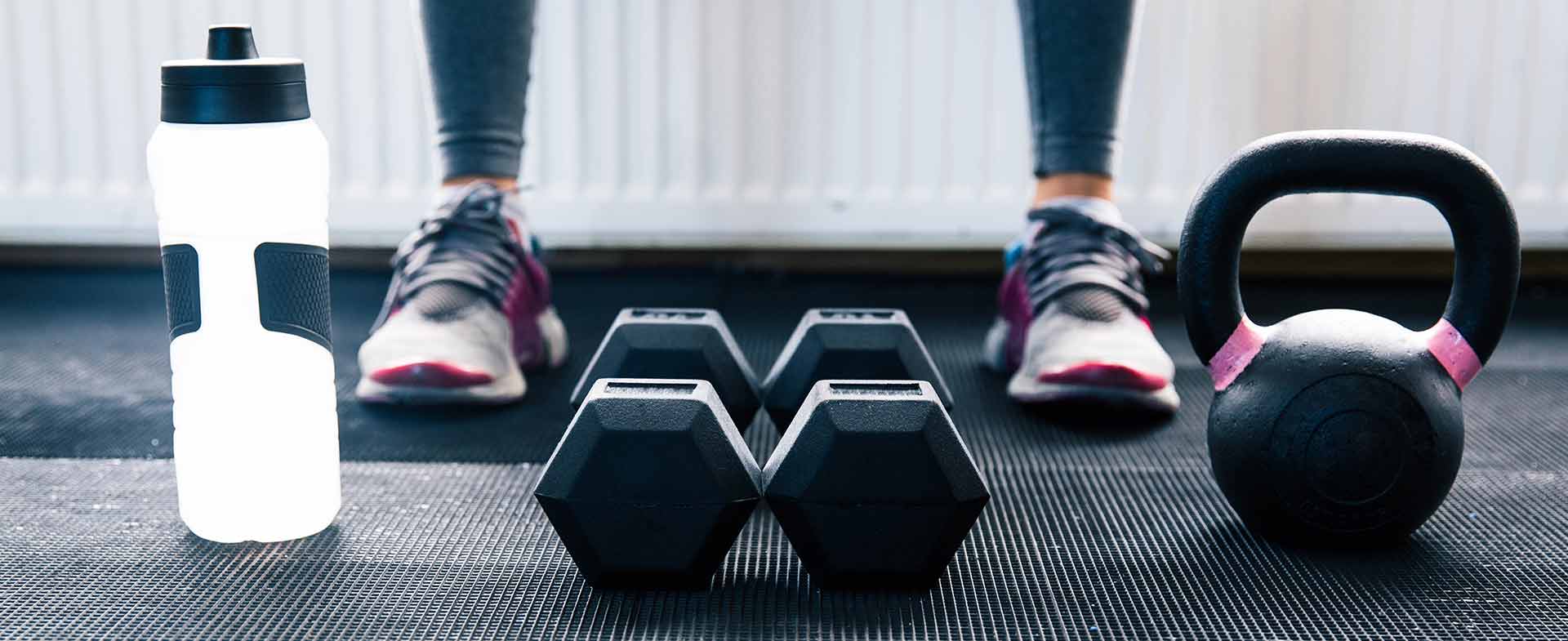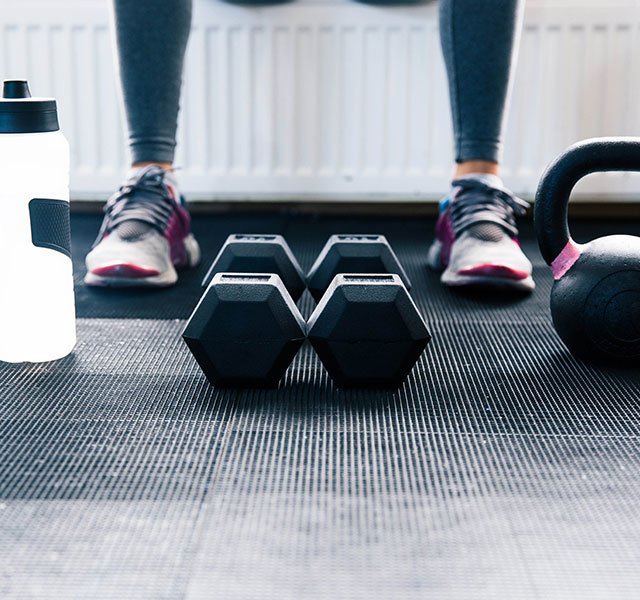Gym rats have been duking it out for decades over which is best: cardio or strength training. But whether you want to build muscle, ditch fat or enhance your cardiovascular fitness (or a combination of all three!), the healthiest approach is to do both—sometimes even within the same workout.
But pound for pound, here’s how the ultimate fitness battle breaks down. Game on!
- Heart Health: There’s little dispute in the health and fitness world that aerobic activity (a.k.a. cardio) has the greatest cardiovascular benefits. It gets the blood pumping, circulates oxygen throughout the body and helps prevent obesity. Cardio is important for heart and lung health, but without strength training, you won’t develop the posture, strength and technique necessary to support you to carry out cardiovascular activities. Even on its own, strength training boasts cardiovascular benefits, too. Think of your muscle like a ham steak with intramuscular marbling. The more you reduce that marbling (or replace fat with muscle), the better blood can circulate throughout your body and to your organs, where it’s needed most.
Edge: Cardio
- Weight Loss: Calorie for calorie, cardio has a slight advantage (10 to 12 calories compared to 8 to 10 for lifting weights). The caveat: Strength training continues torching calories long after you’ve completed your reps. Weight training also increases lean muscle mass, which raises the amount of calories your body uses even when you’re resting. What’s more, muscle takes up less space than fat. The result: tighter abs, toned arms and thighs that don’t jiggle (or at least not as much). So even if a new strength training routine doesn’t cause the number on the scale to drop, your body is still gaining health advantages.
Edge: Strength training
- Stress Relief: The head-clearing effects of cardio workouts are well established. Countless studies show that light cardio activities, like walking or biking for 20 minutes or more, can reduce stress. In fact, endurance athletes who run marathons or bike for extended periods of time often experience a rush of feel-good brain chemicals called endorphins. When you’re in this “flow state,” everything else takes a backseat. Lifting weights, too, may have mood-boosting effects, but the long-term research isn’t there yet. Want the best of both worlds? Punch a bag for 20 minutes. Not only will you release pent-up anger and aggression, you’ll get a cardio workout to boot.
Edge: Cardio
- Muscle Building: Strength training has long held the title for the best way to build muscle. That hasn’t changed. What has? The misperception that lifting weights will cause women to develop rippling muscles and a more masculine physique. Typically, women don’t have enough testosterone to build bulky muscles. Plus, in order to bulk up to that degree, you have to do targeted training. If you’re just doing light resistance exercise a few times a week, you’ll see a small increase in body mass and a decrease in body fat.
Edge: Strength training
- Bone Health: While weight bearing activities, such as walking, running and swimming, are often celebrated for promoting bone health, the repetitive nature of cardio can overly tax joints, tendons and ligaments. Strength training can counteract some of these effects by stressing the bones in a controlled manner and correcting muscle imbalances. A bonus: Developing stronger muscles can help prevent falls and injury, particularly if you focus on abdominal and back muscles. When your abs and back are strong, you’re better equipped to maintain your balance—even on uneven sidewalks. Posture improves, too, so there’s less chance you’ll hunch over (and shrink) as you get older.
Edge: Strength training
For maximum benefits, you should do both forms of exercise regularly. But that doesn’t mean you have to do one or the other each time you work out. Increasingly, fitness programs are integrating both into one seamless session. Moderate intensity cardio warms up your muscles for strength training. If you’re worried about wasting needed energy for weight lifting, keep cardio to 10 to 15 minutes. You can also cool down with cardio, which helps stretch out muscles after strength training. Prefer the heart-thumping high of running? Get that out of the way first. Then end your workout with a 20-minute weight lifting set.
To make an appointment with a doctor or athletic trainer at Henry Ford, call 1-800-HENRYFORD (436-7936) or visit henryford.com/sports.



